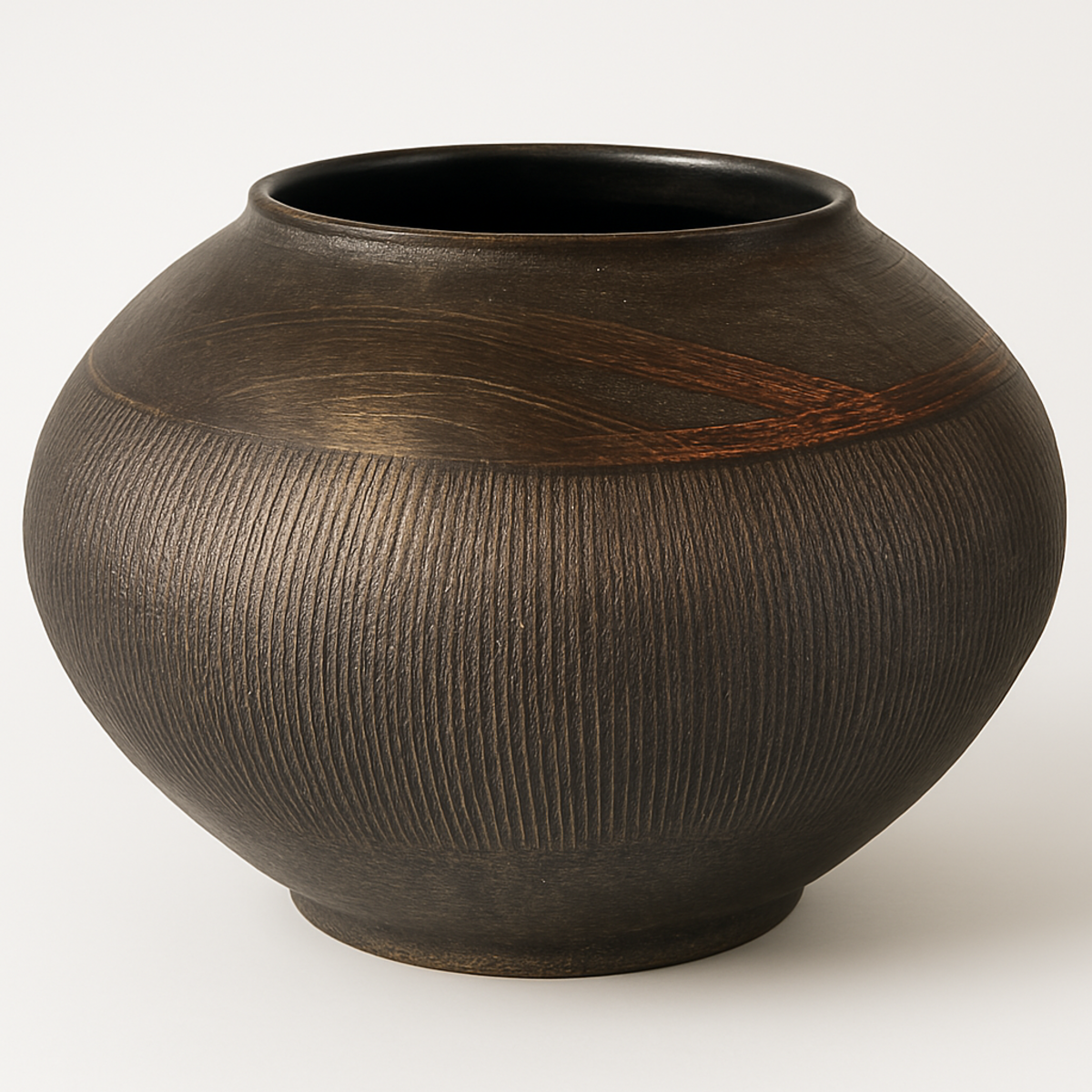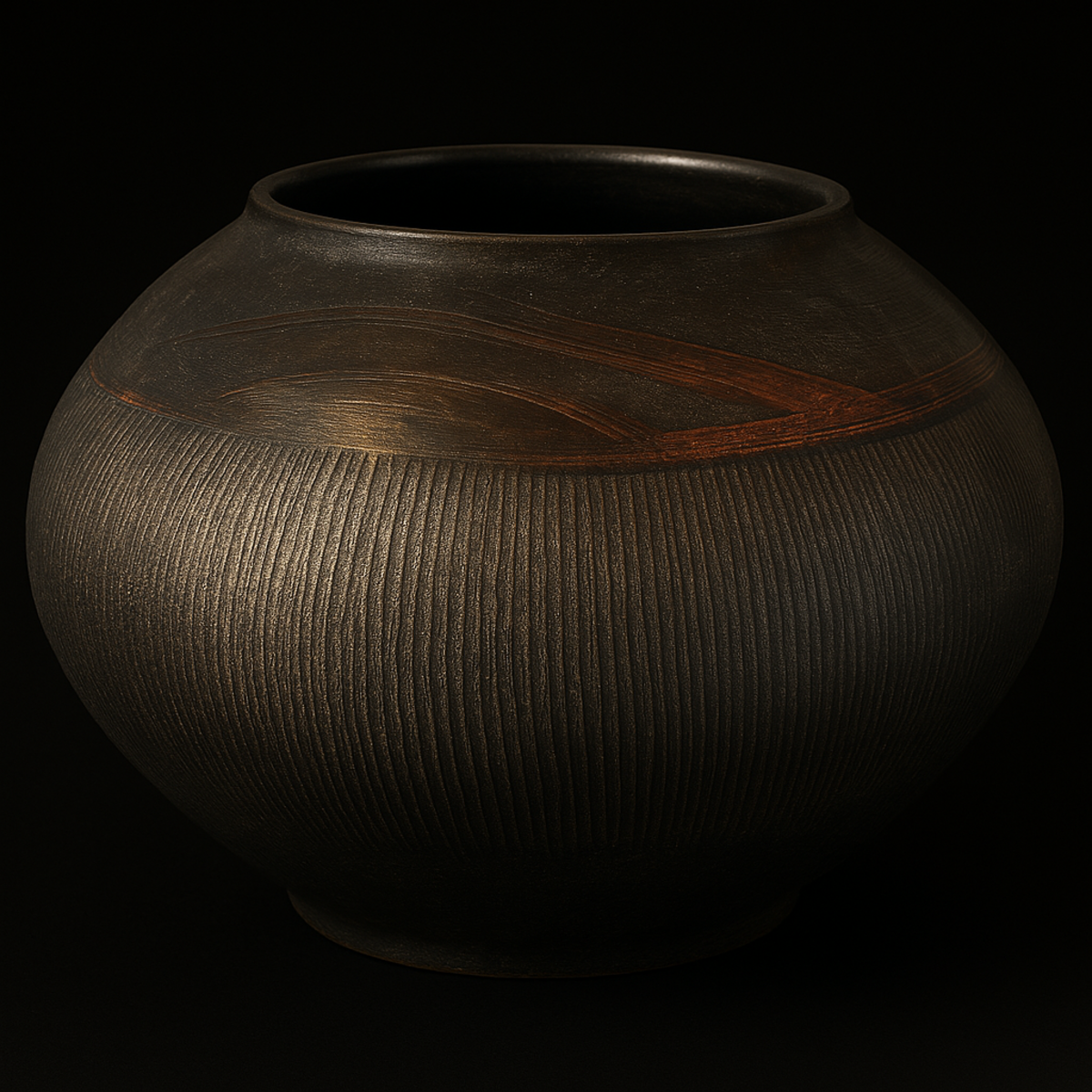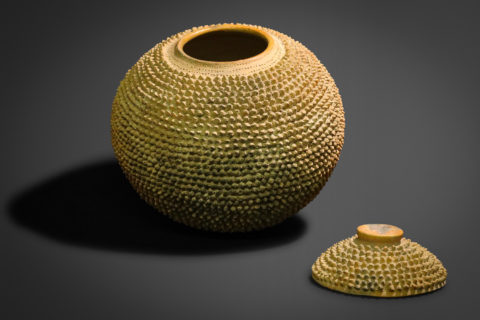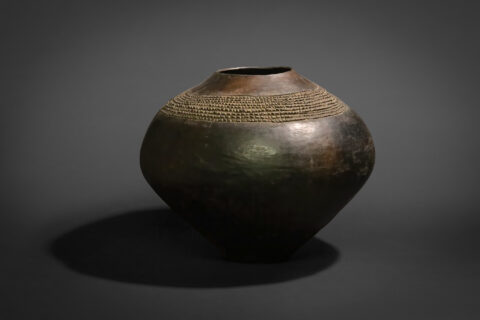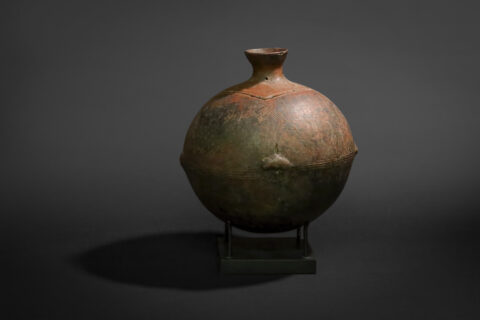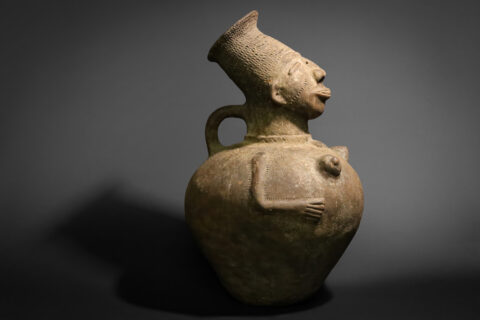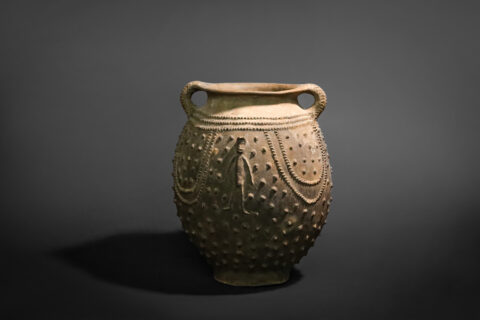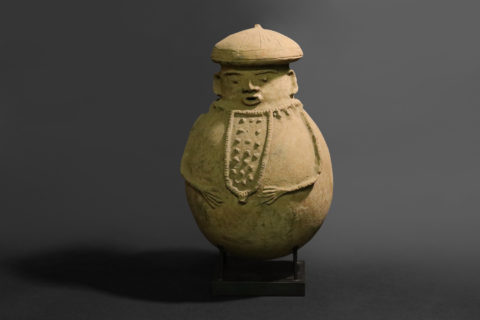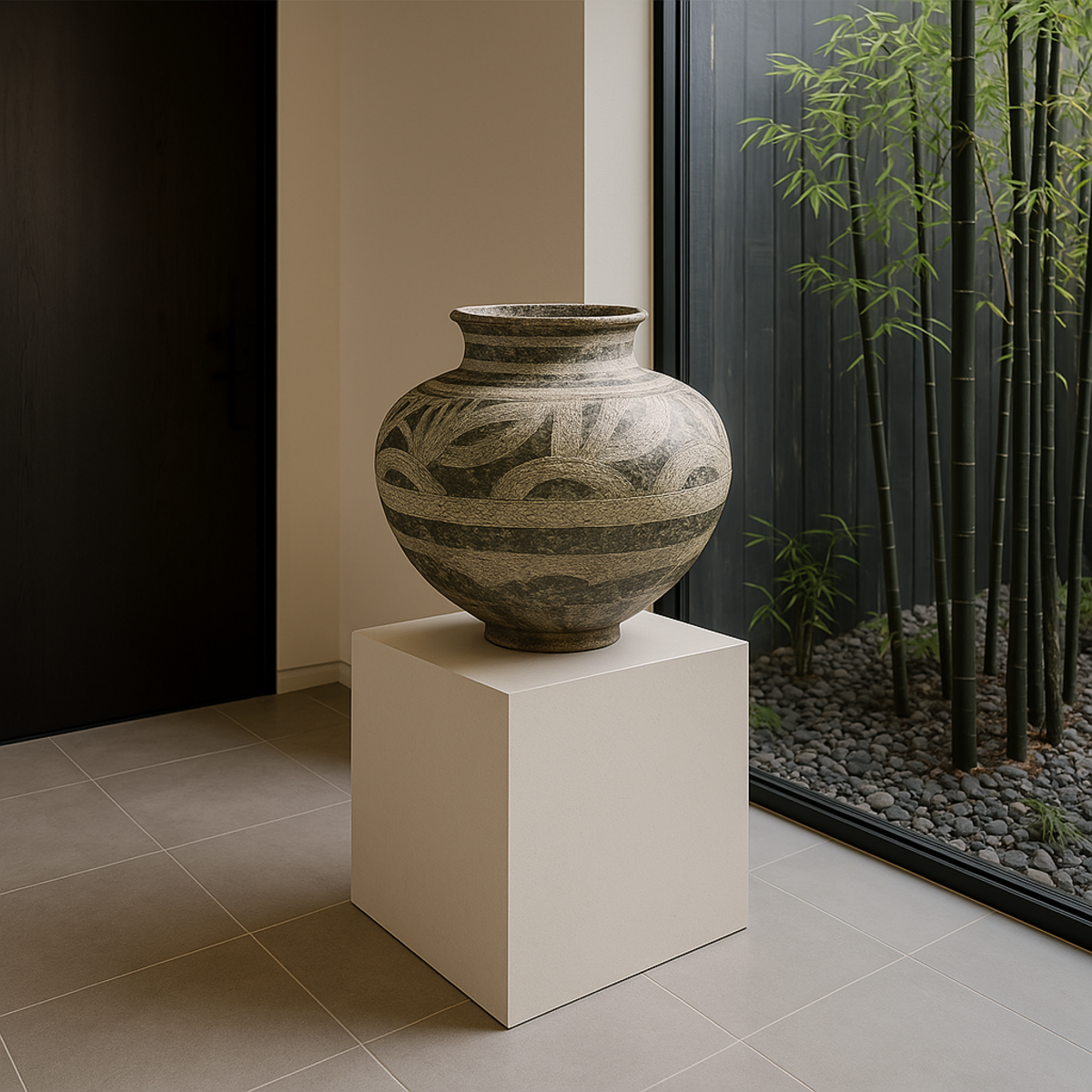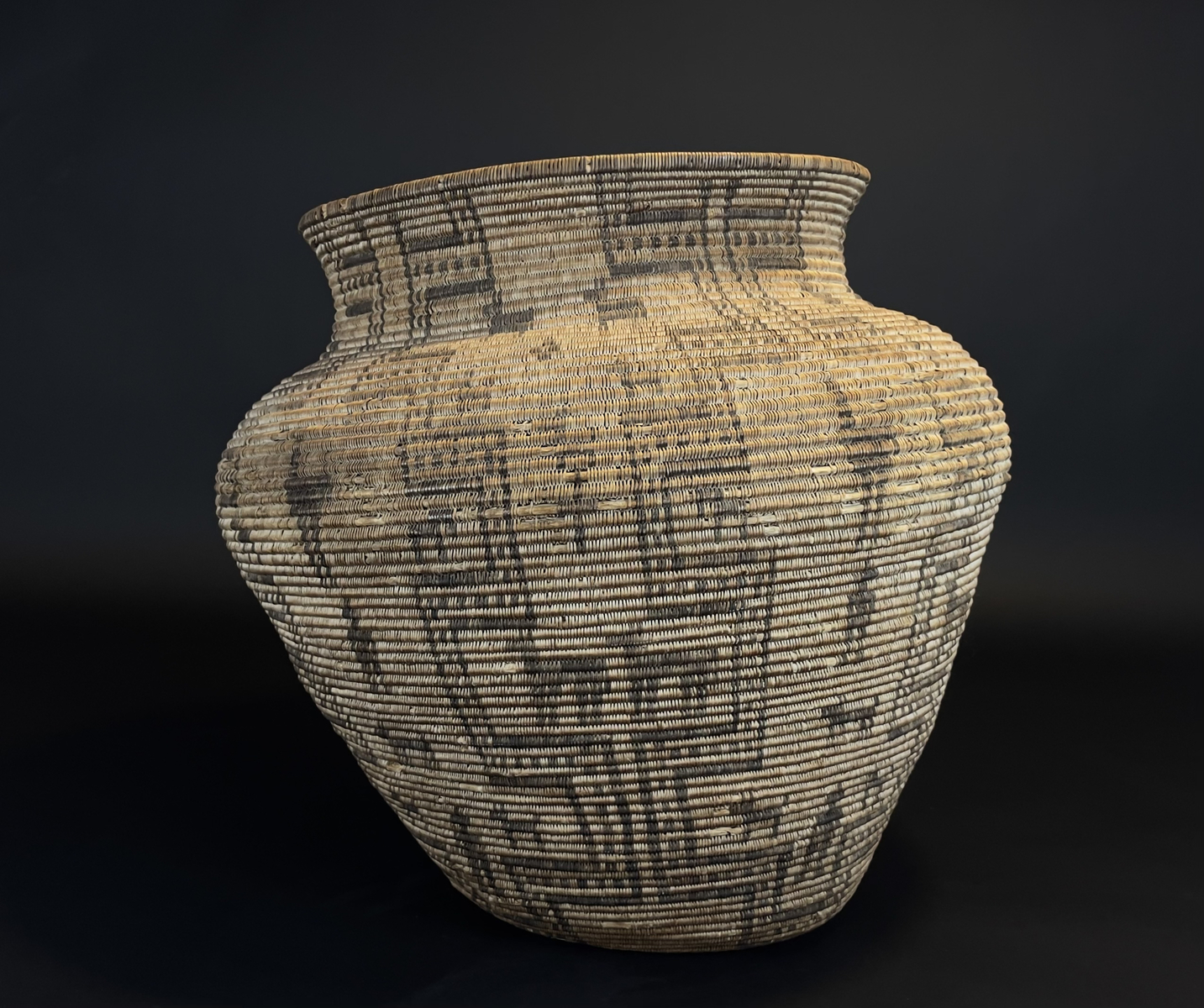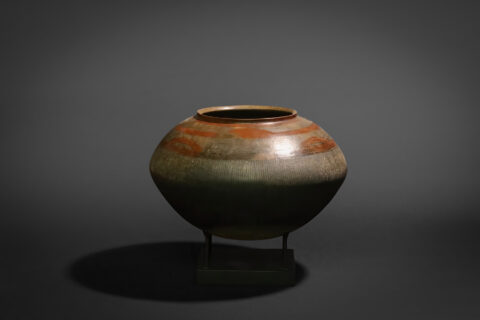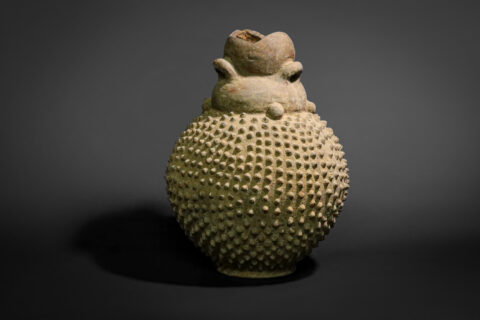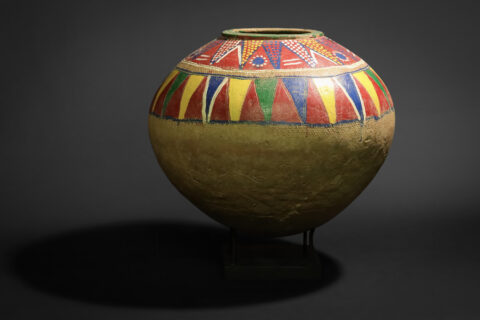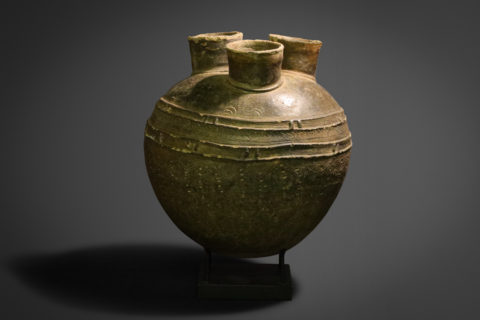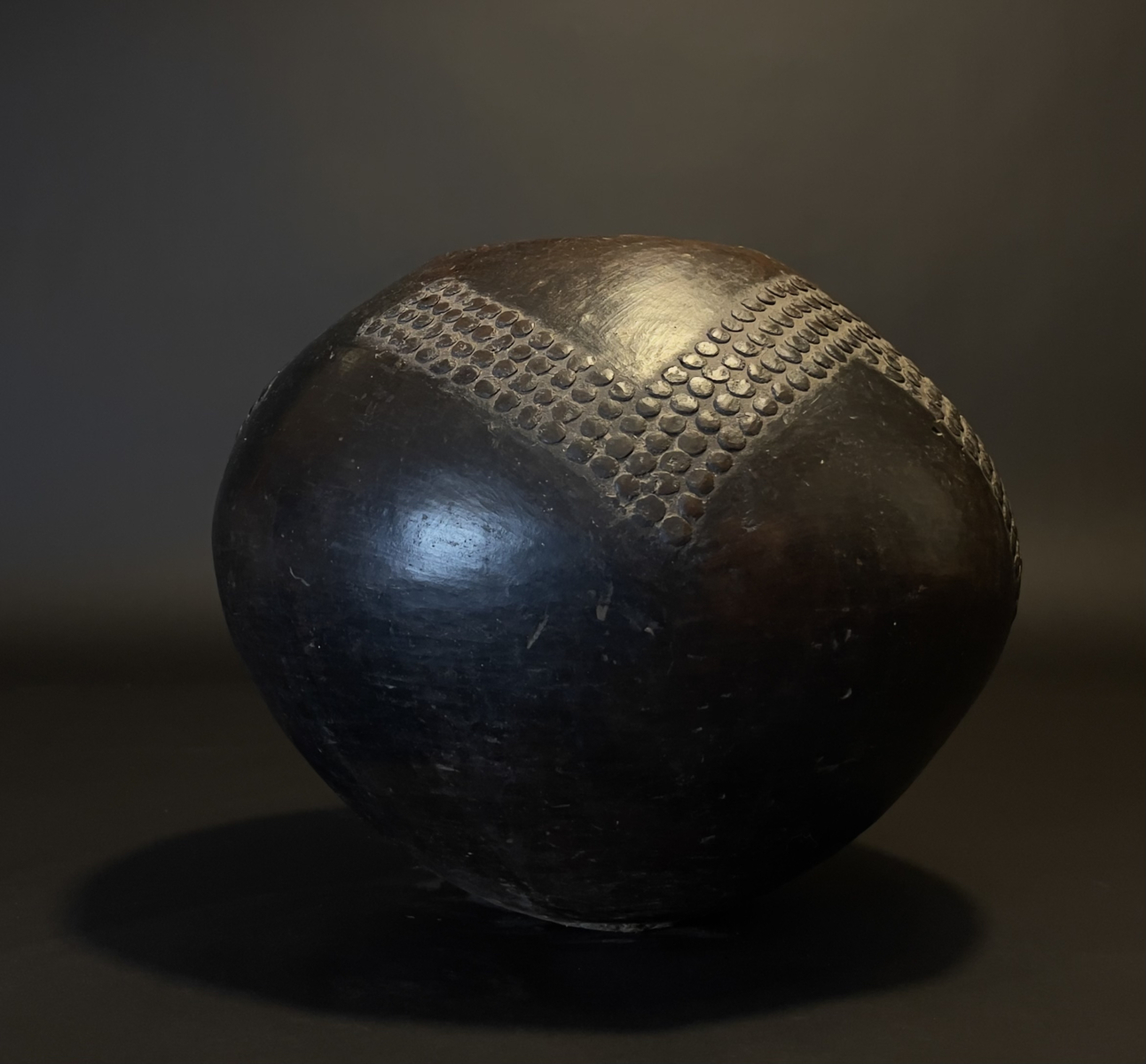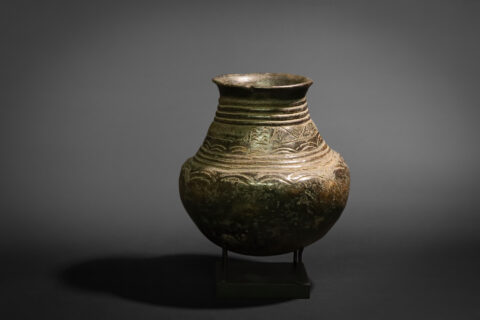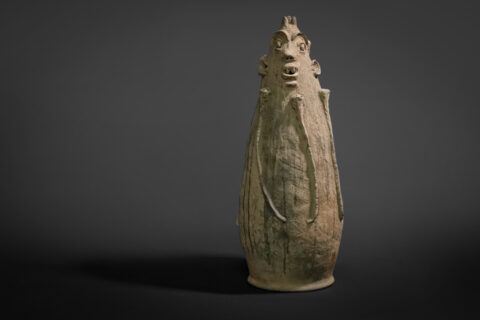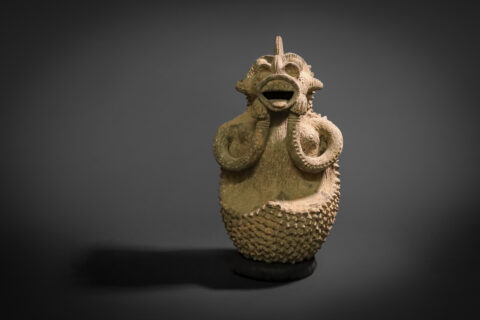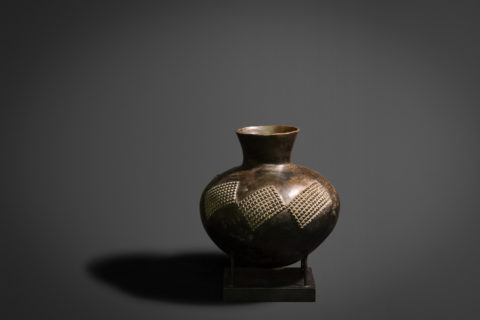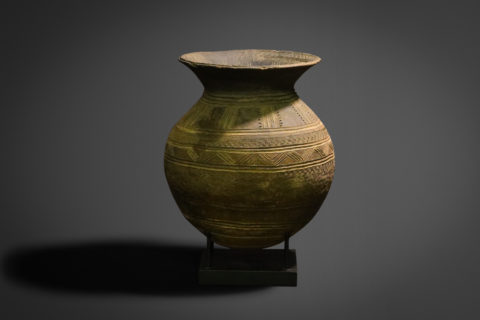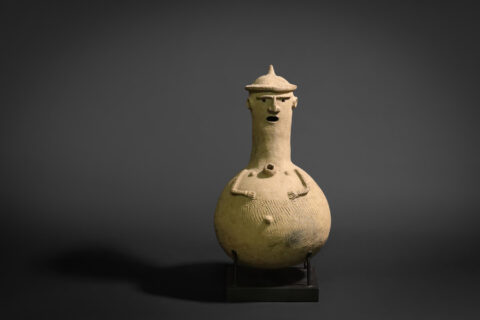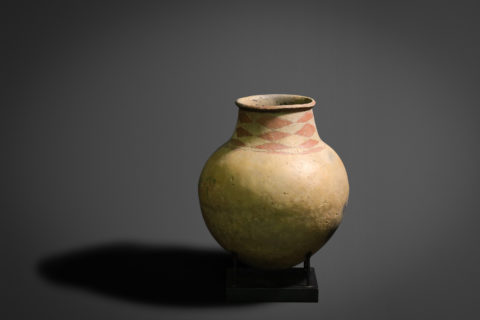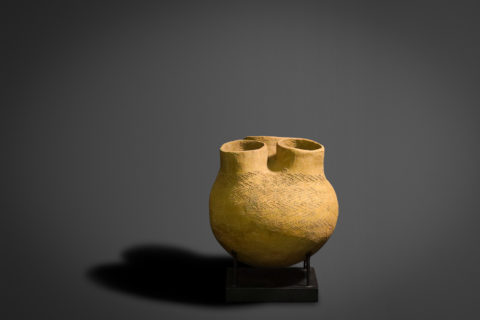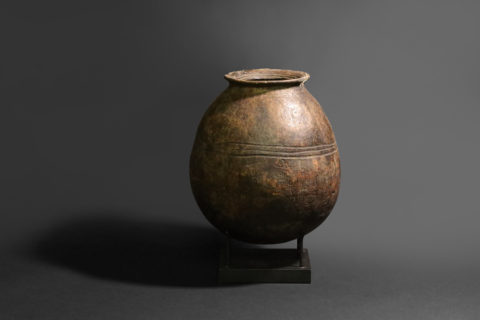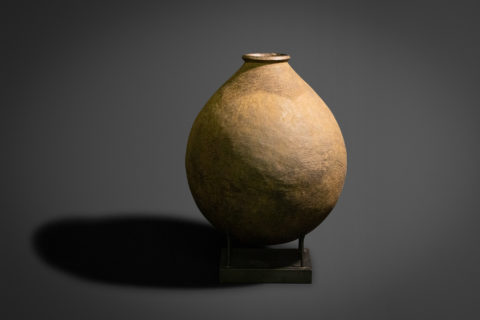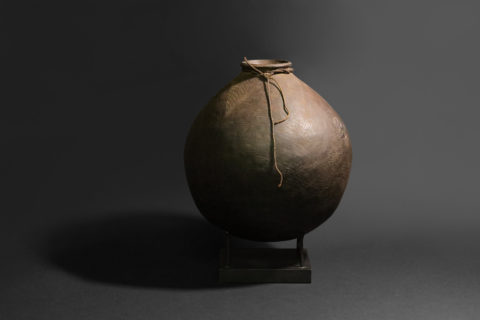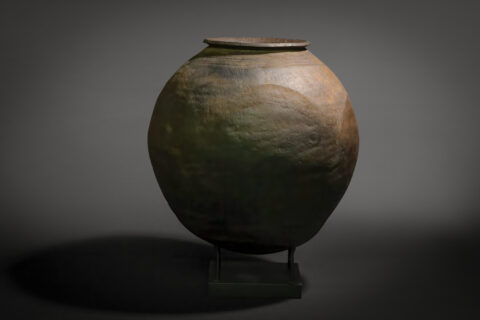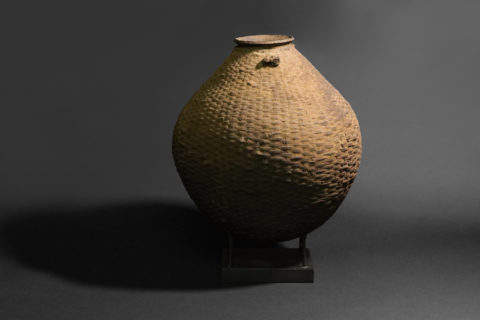Description
This exceptional ceramic vessel is attributed to the Nyakusa (also Nyakyusa) people of southern Tanzania. Hand-built and low-fired, the vessel exemplifies a refined balance between function and artistry. The form is broad-shouldered and low-slung, with a wide, open mouth tapering subtly to a rounded base. It reflects a masterful sense of proportion and surface treatment typical of traditional Nyakusa ceramic aesthetics.
The surface of the pot is marked by a striking duality of textures. The lower two-thirds is incised with dense, evenly spaced vertical striations that offer tactile grip and visual rhythm. The upper register transitions into a smooth, highly burnished band with bold reddish-brown slip brushwork, likely applied using natural pigment. The abstract crossing linear motif evokes symbolic or utilitarian references that remain part of the oral traditions of the region.
The firing process appears to have been carried out in an open pit, yielding a deep blackened finish with subtle tonal variations, evidence of its handmade origin and traditional technique. This piece was most likely used for the storage or fermentation of millet beer (ulanzi) or water, and such vessels were often essential in domestic and ceremonial contexts.


